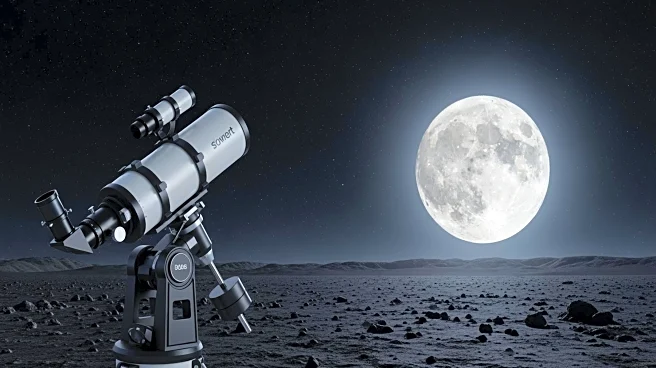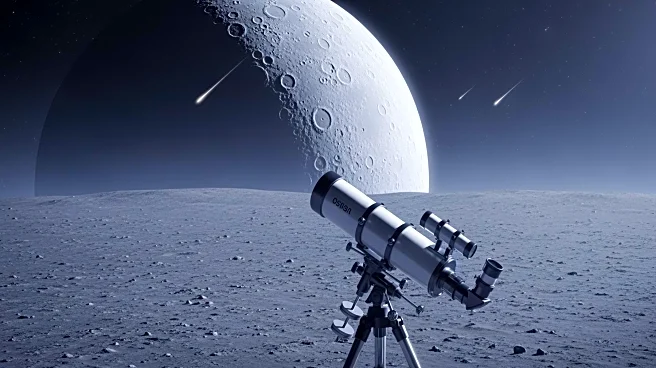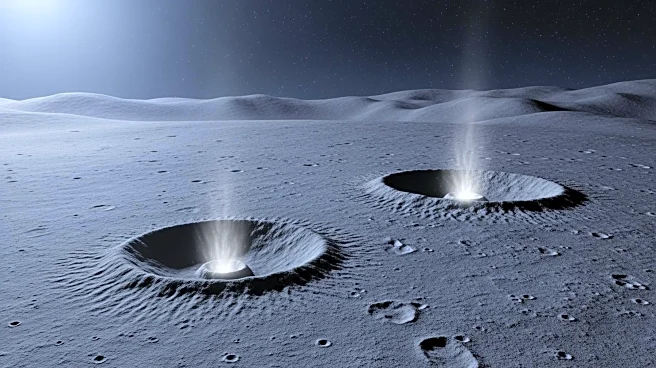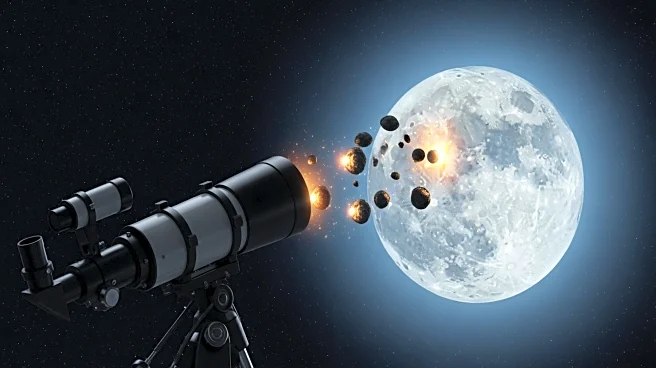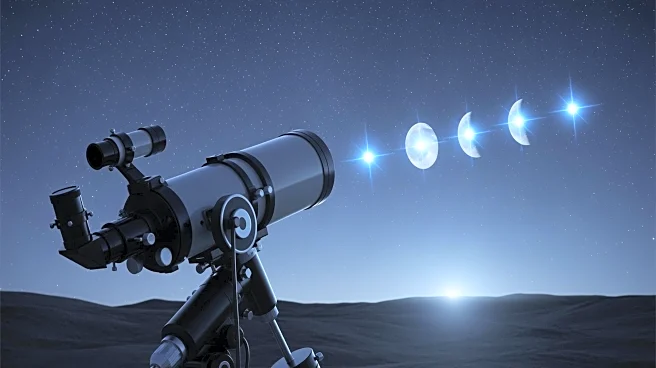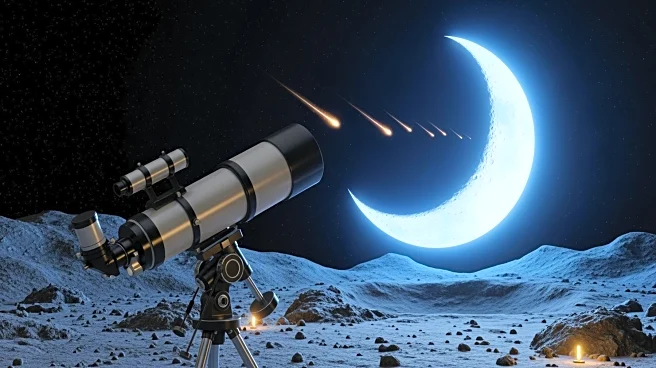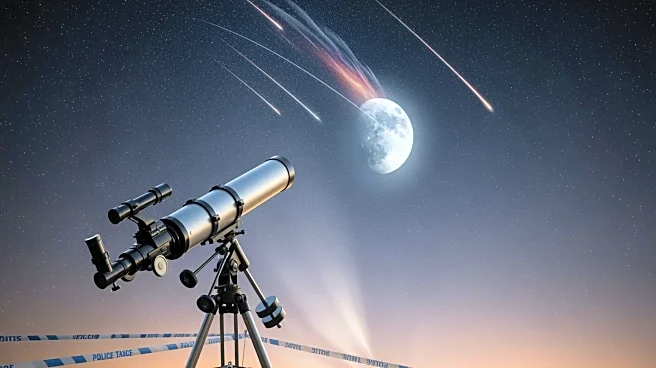What's Happening?
A meteor recently struck the moon, creating a bright flash visible from Earth through telescopes. Daichi Fujii, a curator at Hiratsuka City Museum in Japan, captured the impact using several telescopes. This
event marks the second lunar impact flash recorded by Fujii in recent days. The meteor struck near Oceanus Procellarum, a large lava plain on the moon, and serves as a reminder of the moon's dynamic surface.
Why It's Important?
Observing meteor impacts on the moon helps scientists understand the frequency and intensity of space rock collisions, which can inform predictions about risks to spacecraft and future lunar missions. The moon's lack of atmosphere makes it an ideal target for studying larger meteors, providing valuable data on cosmic impacts and their effects on celestial bodies.
What's Next?
Continued monitoring of lunar impacts will provide more data on the rate and effects of meteoroid collisions. As private space ventures increase, understanding the natural lunar environment becomes crucial for future exploration and development. Researchers will use these observations to refine models of impact risks and inform mission planning.
Beyond the Headlines
The study of lunar impacts highlights the importance of international collaboration in space research and the need for advanced observational techniques to capture transient cosmic events. It underscores the dynamic nature of the moon and its role as a natural laboratory for studying cosmic phenomena.


